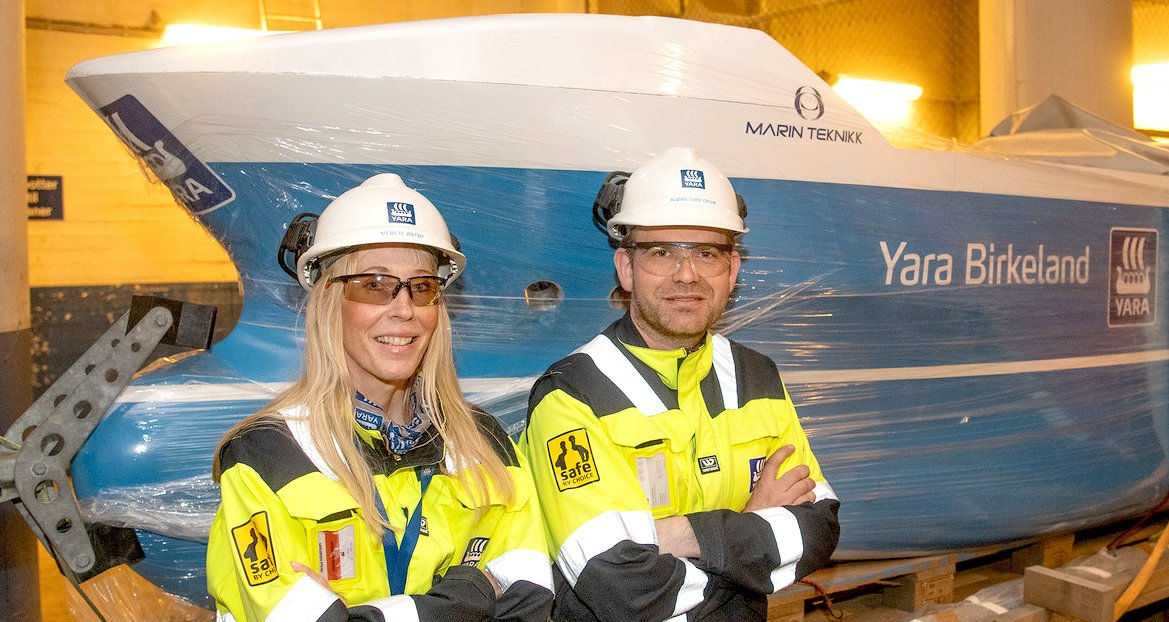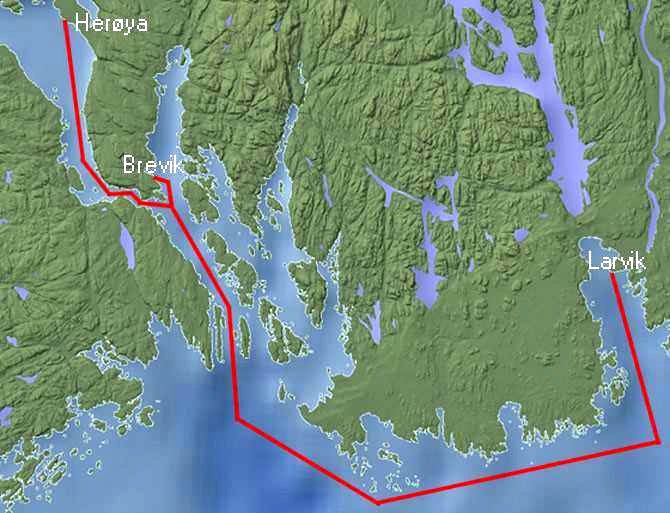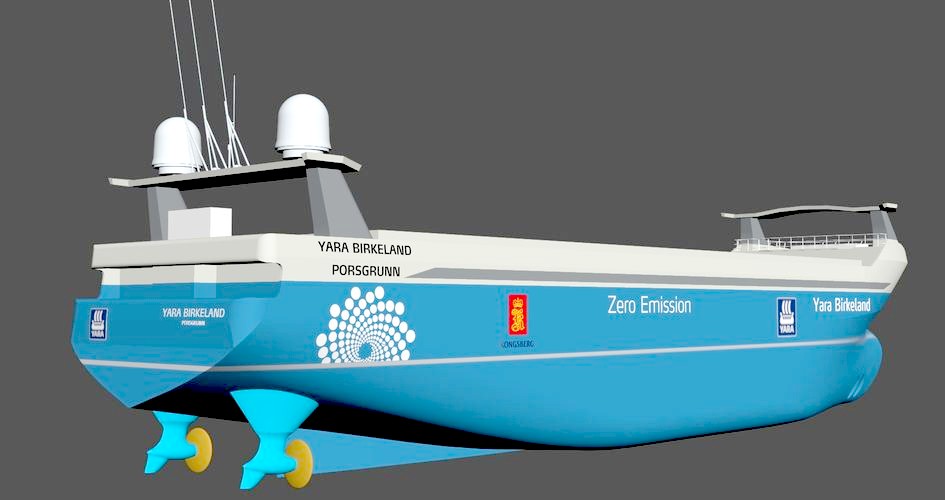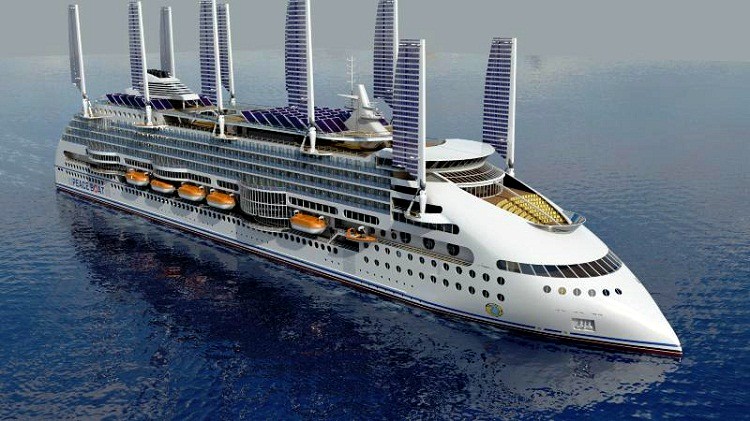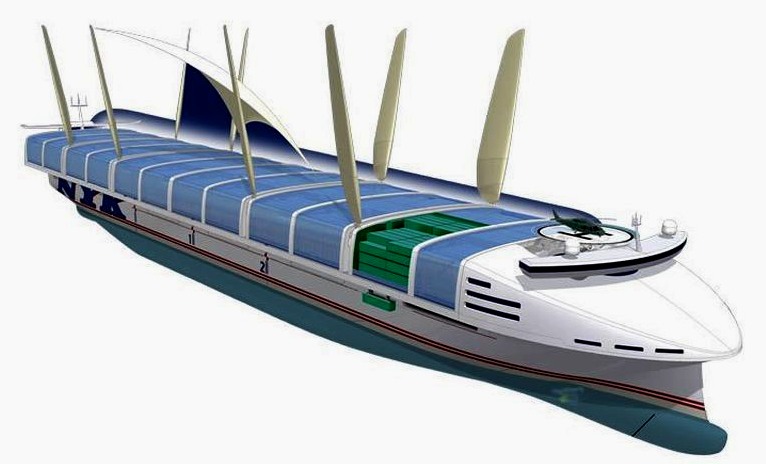|
YARA BIRKELAND
Please use our A-Z INDEX to navigate this site where page links may lead to other sites
|
||||||||||||||||||||||||||||||||||||||||||||||||||||||||||||||||||||||||||||||||||||||
|
Named “Yara Birkeland” after Yara’s founder, the famous scientist and innovator Kristian Birkeland, the vessel will be the world’s first fully electric container feeder.
Loading and discharging will be done automatically using electric cranes and equipment. The ship will not have ballast tanks, but will use the battery pack as permanent ballast. The ship will also be equipped with an automatic mooring system - berthing and unberthing will be done without human intervention, and will not require special implementations dock-side.
The Yara Birkeland is claimed to be the world’s first fully electric and autonomous container ship, with zero emissions. With this vessel, Yara is estimated to reduce diesel-powered truck haulage by 40,000 journeys a year.
This new zero-emission vessel is said to be a game-changer for global maritime transport contributing to meet the UN sustainability goals.
“Every day, more than 100 diesel truck journeys are needed to transport products from Yara’s Porsgrunn plant to ports in Brevik and Larvik where we ship products to customers around the world. With this new autonomous battery-driven container vessel we move transport from road to sea and thereby reduce noise and dust emissions, improve the safety of local roads, and reduce NOx and CO2 emissions,” says Holsether.
WILD
IDEA - Merete Østby, responsible for the IT land solution, and project manager Bjørn Tore Orvik, in front of the model of Yara Birkeland.
He is not only project manager of the world's first commercial, autonomous, emission-free container vessel, but also the man behind the idea.
He contacted the Kongsberg Group to hear their views of the idea, and after a few meetings, he brought the Kongsberg Group and Yara management together. Then the snowball started to pick up speed.
Milestones
2018 - Delivering ship yard is decided to be Vard Brevik in Norway. The hull will be delivered by Vard Braila in Romania.
2019 - Testing of autonomous capability will be carried out.
2020 (initially planned 2019): final delivery of the vessel, launching of remote control mode operations and testing of autonomous capabilities
KONGSBERG is responsible for development and delivery of all key enabling technologies on Yara Birkeland, a 120 TEU container ship including the sensors and integration required for remote and autonomous operations, in addition to the electric drive, battery and propulsion control systems.
The situational awareness system will be comprised of multiple sensors. The traditional systems such as GPS, RADAR, AIS will be augmented with a set of proximity sensors, LIDAR and several regular and IR cameras. The communication capabilities will we based on maritime broadband radio, satellite communication and GSM connectivity.
DNV GL is expected to assist in the certification process and Norwegian maritime authorities will ensure the implementation of the relevant rules and regulations.
Yara Birkeland will be 80 metres (260 ft) long, with a beam of 14.8 metres (49 ft) and a depth of 12 metres (39 ft). It will have a draught of 6 metres (20 ft). It will be propelled by electric motors driving two azimuth pods and two tunnel thrusters. Batteries rated at 7.0-9.0 MWh will power the electric motors, giving it an energy optimal speed of 6 knots (11 km/h) and a maximum speed of 10 knots (19 km/h). It will have a capacity of 120 TEU. The Norwegian Government gave a grant of NOK133.6m towards the construction of the ship, about a third of the total cost, in September 2017.
Length o.a.: 79,5 m
Capacity
Cargo capacity: 120 TEU
Proximity sensors
Radar
Connectivity & Communication
Maritime Broadband Radio
The autonomous ship will sail within 12 nautical miles from the coast, between 3 ports in southern Norway. The part of the area carrying most of the ship traffic is covered by the The Norwegian Coastal Administrations' VTS system at Brevik. The distances between the ports are: Herøya – Brevik (approx. 7 nm) and Herøya – Larvik (approx. 30 nm).
CARGO CONTENDERS A list of the top ten fossil fueled leaders that could benefit from solar and wind assistance. You may notice from the specification of these vessels that we are in the right ballpark for power to cargo ratio when comparing DWT to installed engine power:
...
A - Z SAIL AND SOLAR ASSISTED BOATS & SHIPS
LINKS & REFERENCES
https://eng.heroya-industripark.no/latest-news/the-yara-birkeland-project-is-important-for-the-environment-replacing-40-000-lorries https://www.rina.org.uk/yarabirkeland.html https://www.ship-technology.com/projects/yara-birkeland-autonomous-container-vessel/ https://www.autonomousshipshq.com/yara-birkeland/ https://www.kongsberg.com/maritime/support/themes/autonomous-ship-project-key-facts-about-yara-birkeland/ https://en.wikipedia.org/wiki/MV_Yara_Birkeland https://www.yara.com/knowledge-grows/game-changer-for-the-environment/
TRANSFERABLE TECHNOLOGY - The design of the Climate Change Challenger might be adapted to Cargo, Container, Cruise and Ferry designs, without needing to radically alter port facilities. The designs above are not representative of adaptations of the concept, but serve to illustrate the thinking of other design houses.
Please use our A-Z INDEX to navigate this site
AEGEAN - ADRIATIC SEA - ARCTIC OCEAN - ATLANTIC OCEAN - BALTIC SEA - BAY OF BENGAL - BERING SEA - CARIBBEAN SEA - CORAL SEA EAST CHINA SEA - ENGLISH CHANNEL - GULF OF GUINEA - GULF OF MEXICO - INDIAN OCEAN - IONIAN - IRISH SEA - MEDITERRANEAN SEA NORTH SEA - PACIFIC OCEAN - PERSIAN GULF - SEA OF JAPAN - SOUTH CHINA SEA - SOUTHERN OCEAN - TYRRHENIAN
|
||||||||||||||||||||||||||||||||||||||||||||||||||||||||||||||||||||||||||||||||||||||
|
This website is provided on a free basis as a public information service. copyright © Climate Change Trust 2019. Solar Studios, BN271RF, United Kingdom.
|

